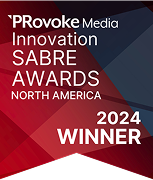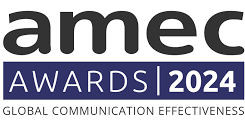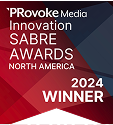Love it or hate it, predictive text holds potential for professionals across industries — including PR. From saving time to strengthening language, predictive text can empower PR pros to be more confident and efficient. But as with most tech, predictive text is far from perfect, with troubling consequences if not used properly.
Getting the best out of today’s predictive text tools can be a bit of a balancing act; it’s crucial to be mindful of both the pros and cons at play. Luckily, we’re here to break it all down for you — read on to learn how to navigate predictive text as a PR pro.
Pondering the potential
In an industry as fast-paced as PR, time-saving tools are a welcome addition to workflows. In theory, predictive text’s ultimate goal is to make the writing process more efficient. It may not seem significant at first, but over time, predictive text can save you hours on content by helping keep writer’s block at bay.
Predictive text is powered by machine learning algorithms, so the patterns of your word choices and phrases are continuously analyzed, enabling the system to refine its suggestions based on your writing style. Therefore, predictive text (ideally) becomes increasingly accurate, suggesting relevant terms that can save PR pros time on pitches, press releases, decks and virtually any other day-to-day tasks that require writing.
Considering predictive text’s ability to learn your writing habits, it can also help maintain consistency across your messaging. Although human touch remains essential in effective communication and relationship-building, tech like predictive text can still assist in areas such as personalization; it can help PR pros tailor their messages by suggesting words and phrases commonly linked to certain interests or sentiments, for example.
Weighing the pitfalls
Much like the humans that use them, tech tools aren’t immune to making mistakes. Ironically, though, technology’s lack of humanity is often what holds it back — a phenomenon that can certainly be seen with predictive text.
Predictive text tends to do a pretty good job of picking up on cues, but contextual errors still aren’t uncommon. It can go off track from time-to-time, suggesting words that are out of context or inappropriate for the overall tone of the message. While there are times where an out-of-place word may be relatively harmless, that’s not always the case — predictive text has been known to have biases and even suggest insensitive language, such as microaggressions.
Additionally, users who depend too heavily on predictive text for creative projects can wind up with a lack of authenticity or freshness in their messaging, leading to undesirable results. Neglecting to couple predictive text with human craftsmanship can be the biggest pitfall of all in the long run.
Nailing the balancing act
If there’s one thing we can predict about the future of tech, it’s that the greatest results will be achieved when humans and machines work in tandem. Humans today can’t reach their full potential at work without tech, and tech can’t reach its full potential without human intelligence.
Luckily, we have ways to keep this relationship balanced. With predictive text, you can use suggestions as a starting point, revisiting them before sending. Although it may seem counterintuitive on the time-saving front, it’s always worth double-checking that your message makes sense. Revisiting suggestions might even encourage you to opt for a stronger or more appropriate word; predictive text can kickstart your creative juices.
If you don’t have the desire to vet all your suggestions, you can just tap predictive text to save time on low-stakes, internal comms — such as short emails or Slacks — rather than relying on it for more sensitive projects.
Whatever your preference, work ultimately becomes easier when you leverage smart text tools. In addition to predictive text, consider adding Taylor to your comms tech toolkit.
With Taylor, our AI writing tool designed for PR pros, what once took up to two hours can now be done in two minutes. You can give Taylor a short prompt to produce a pitch or press release, or you can paste in an existing press release and receive a pitch that can be tailored to individual journalists. On top of these time-savers, Taylor can even generate social copy.
Ready to meet Taylor? Join Freemium or schedule a quick 15-minute chat here!






